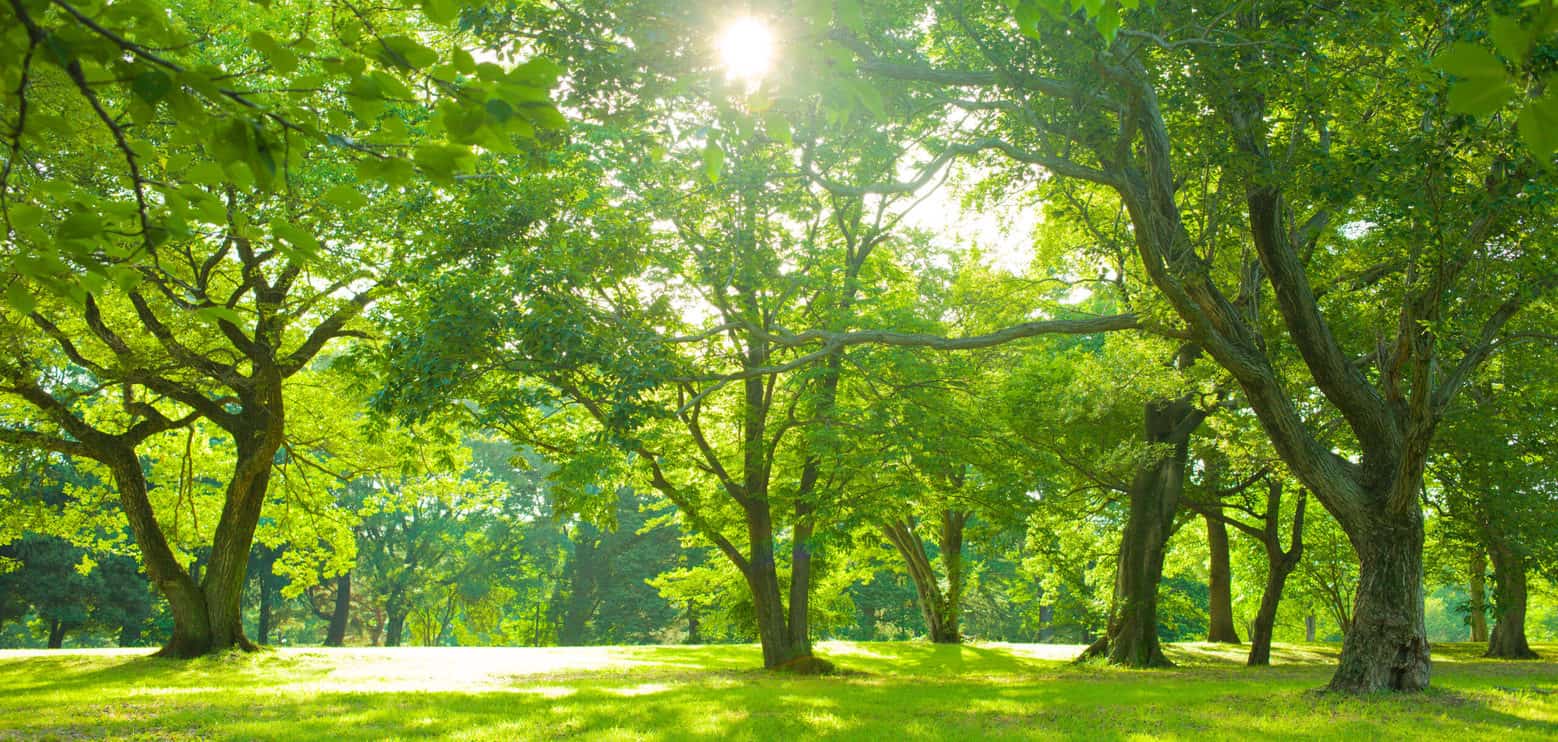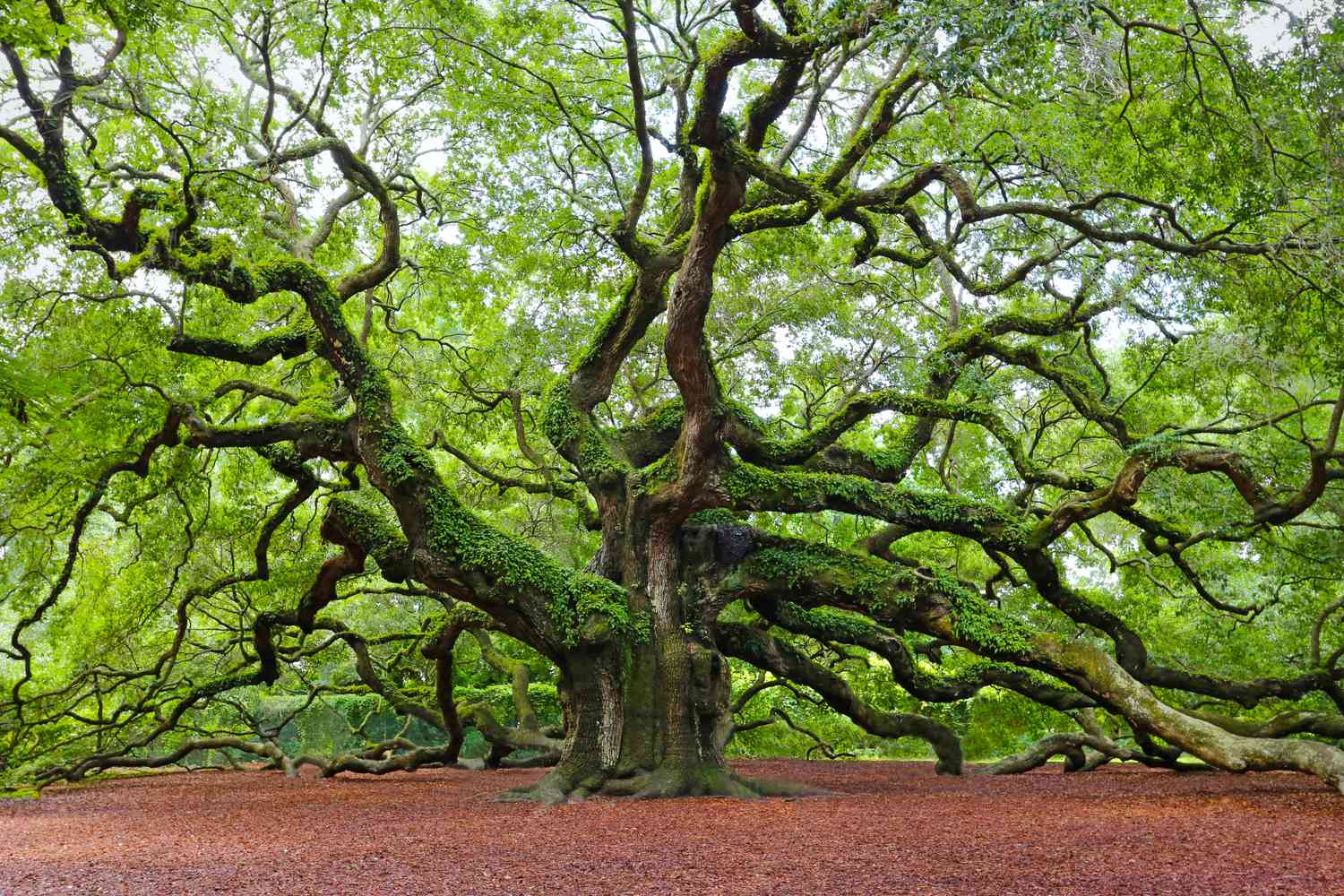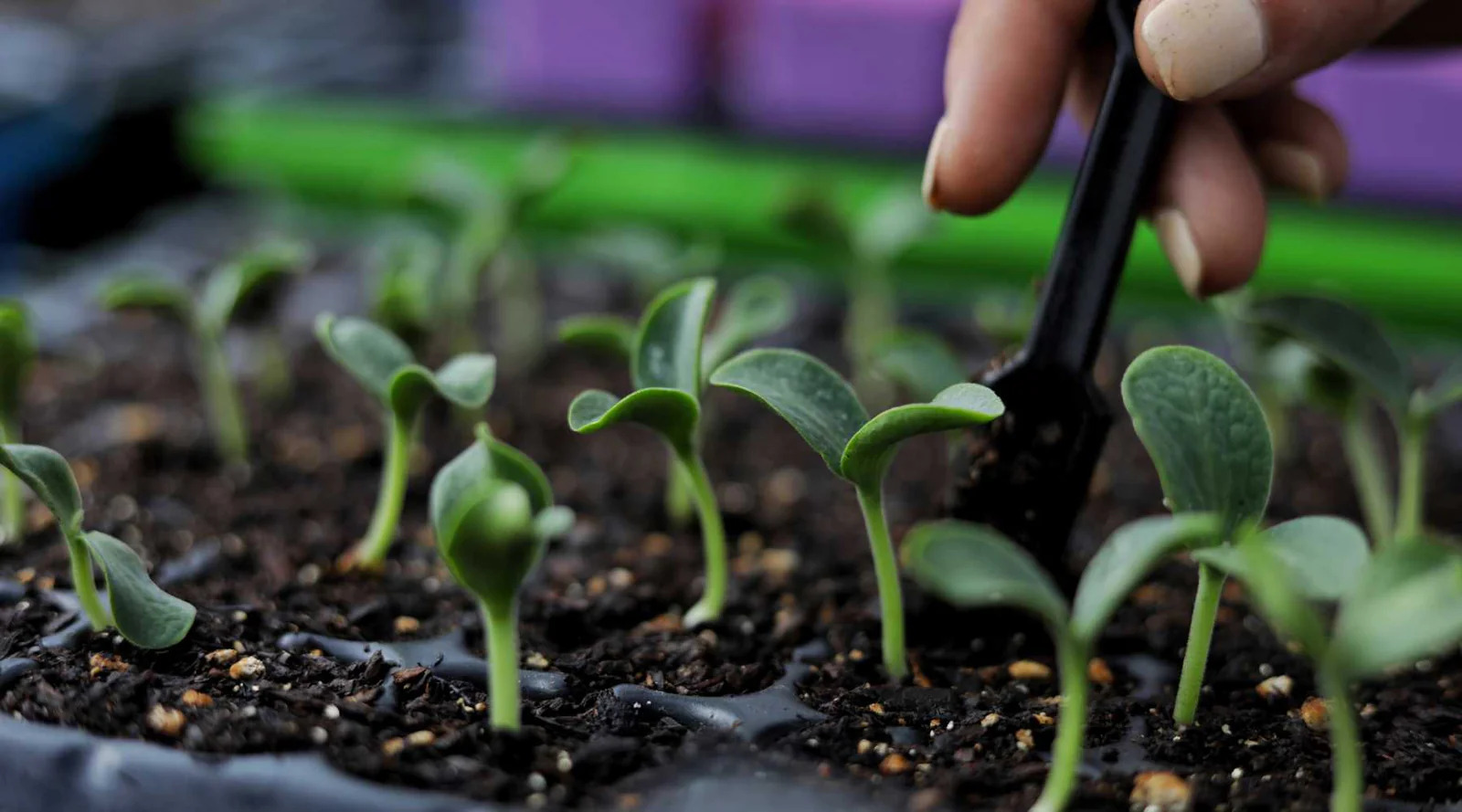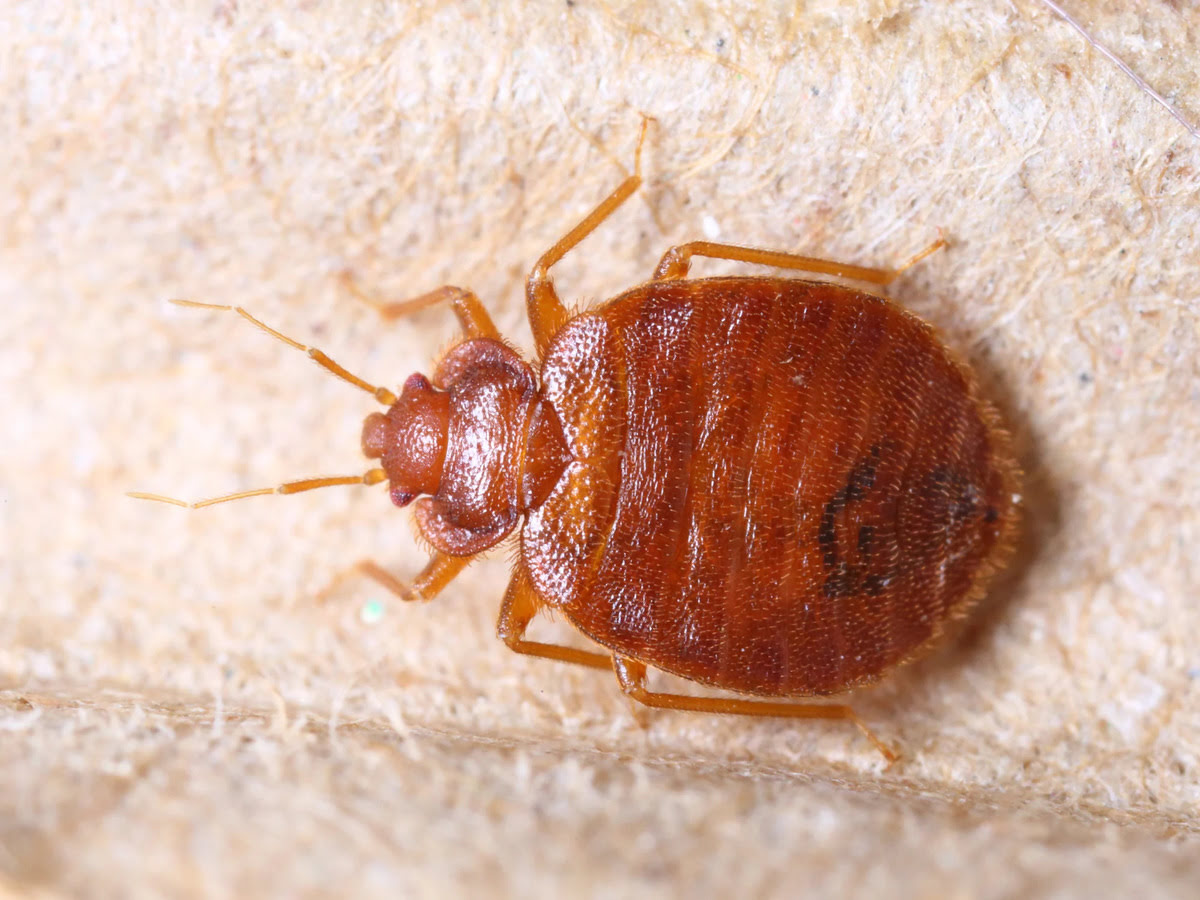Home>Gardening Tips and Tricks>Problem Solving>Why Does Moss Grow On Trees
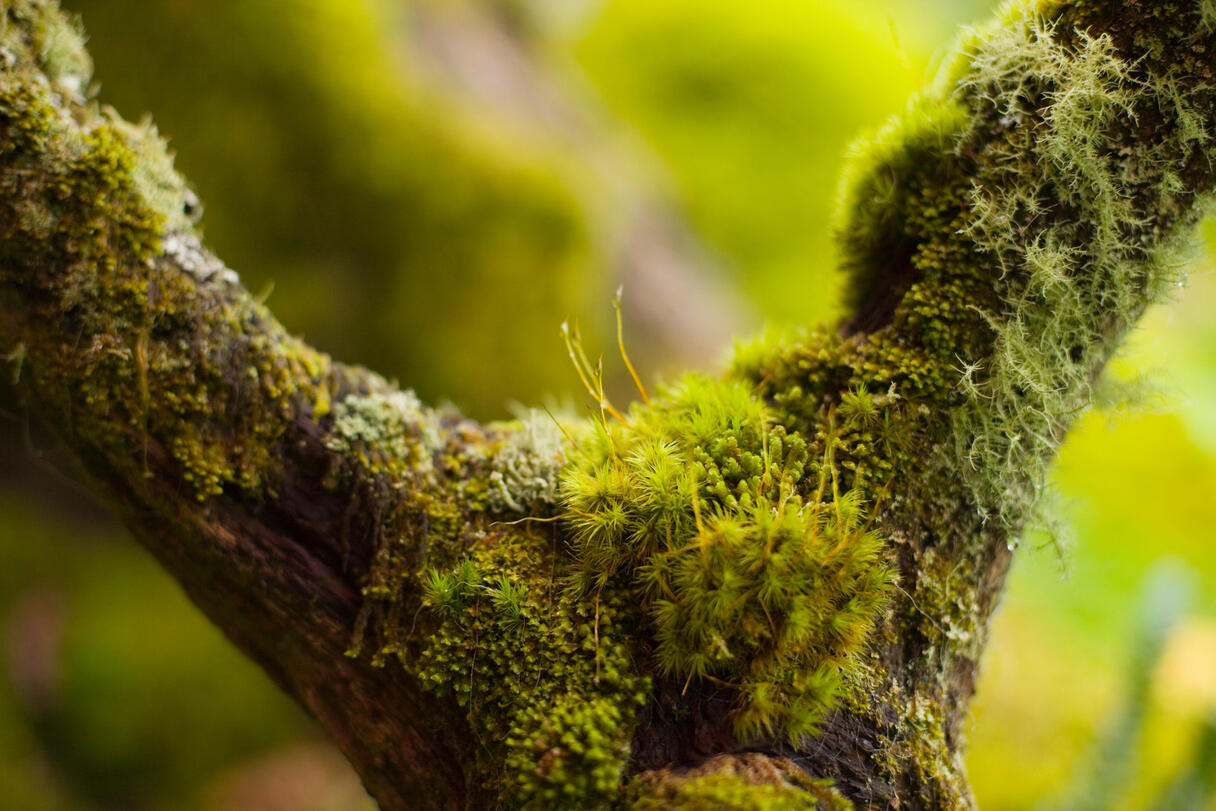

Problem Solving
Why Does Moss Grow On Trees
Published: November 12, 2023
Learn about the problem-solving strategies behind why moss grows on trees and how to effectively tackle this issue.
(Many of the links in this article redirect to a specific reviewed product. Your purchase of these products through affiliate links helps to generate commission for Chicagolandgardening.com, at no extra cost. Learn more)
Table of Contents
Introduction
Welcome to the enchanting world of moss-covered trees! If you’ve ever taken a peaceful stroll through the woods or wandered through a lush green forest, you may have noticed the mesmerizing sight of moss growing on the trunks and branches of trees.
Mosses are primitive plants that belong to the Bryophyte group, which also includes liverworts and hornworts. They are small, non-vascular plants that lack roots, stems, and leaves like traditional plants. Instead, they have delicate, thread-like structures known as rhizoids that anchor them to the substrate.
Many factors contribute to the growth of moss on trees. Perhaps the most crucial factor is the environmental conditions that favor moss development. Moisture, shade, and a stable climate play a significant role in creating the ideal habitat for mosses to thrive.
Moss and trees share a symbiotic relationship. While mosses benefit from the support and protection provided by trees, they, in turn, impact the tree’s health and ecosystem. Moss acts as a natural insulator, preventing excessive moisture evaporation from tree bark and providing refuge for insects and other small organisms that play a crucial role in the forest’s ecosystem.
Like most natural phenomena, moss growth on trees has its benefits and drawbacks. On one hand, moss adds aesthetic value to the forest, creating a picturesque scene straight out of a fairytale. On the other hand, excessive moss growth can cause harm to trees by impeding their growth and inhibiting the penetration of sunlight and nutrients.
Understanding how moss grows on trees is essential for those looking to prevent or remove it from their beloved trees. Moss can thrive in a variety of conditions, but controlling moisture levels and increasing sunlight exposure can help prevent moss overgrowth.
In this article, we will explore the fascinating world of moss on trees, discussing the environmental conditions favorable for moss growth, the symbiotic relationship between moss and trees, the benefits and harm of moss on trees, and effective methods for preventing and removing moss from trees.
What is Moss?
Moss is a type of primitive plant that belongs to the Bryophyte group, which also includes liverworts and hornworts. Unlike other plants, mosses lack vascular systems and true roots, stems, and leaves. Instead, they have simple structures called rhizoids that anchor them to their substrate. These tiny, non-vascular plants can be found in a variety of habitats, including forests, wetlands, rocks, and even on the bark of trees.
Mosses come in many forms, varying in color, texture, and size. They typically have small, scale-like leaves arranged in dense clusters. Some species of moss have fascinating structures, such as tiny structures called sporophytes that rise up from the plant and release spores into the surrounding environment.
One remarkable characteristic of moss is its ability to absorb and retain moisture. This makes them particularly well-suited for growth in damp environments. Mosses have unique adaptations that allow them to efficiently absorb water and nutrients from their surroundings, enabling them to thrive even in areas with high humidity or waterlogged conditions.
Another interesting aspect of moss is its ability to reproduce asexually through fragmentation. Small sections of moss can break off and establish new colonies in favorable environments. Additionally, mosses can also reproduce sexually through the release of spores, which are dispersed by the wind or water. This reproductive strategy allows moss to colonize diverse habitats and spread across vast geographic regions.
Mosses play a significant ecological role. They provide habitat and shelter for various microorganisms, insects, and other small organisms. The dense, cushion-like structures of moss can trap dead plant material, thereby contributing to the formation of new soil over time. Additionally, mosses contribute to nutrient cycling and act as indicators of environmental conditions, making them valuable tools for studying the health of ecosystems.
While mosses are often associated with damp and shaded environments, some species are also capable of growing on trees. This unique adaptation allows mosses to take advantage of the vertical surfaces provided by tree trunks and branches, expanding their range and ecological niche. The relationship between moss and trees is a fascinating study in mutual benefit and interaction, which we will delve into in the following sections.
Environmental Conditions Favoring Moss Growth
Mosses are highly adaptable plants that can thrive in a variety of environmental conditions. However, certain factors are more conducive to their growth and colonization. Understanding these conditions can help us comprehend why moss tends to flourish in specific habitats:
- Moisture: Mosses require high levels of moisture to survive and grow. They are particularly well-suited to environments with ample rainfall or high humidity. Moisture allows mosses to absorb water and nutrients directly through their leaf surfaces, enabling them to thrive even in areas where the soil is poor or waterlogged. Mosses are adept at retaining moisture, which is essential for their survival during drier periods.
- Shade: While some moss species can tolerate varying degrees of sunlight exposure, many prefer shade or partial shade. Dense tree canopies, forest understory, and areas with limited direct sunlight provide ideal conditions for mosses to thrive. These shaded environments help prevent excessive evaporation and maintain the necessary moisture levels for moss growth.
- Temperature and Climate: Mosses are found worldwide, from polar regions to tropical rainforests. However, they tend to be most abundant and diverse in temperate and moist climates. Cooler temperatures, along with ample rainfall and humidity, create optimal conditions for moss growth. Mosses can even continue to grow during winter months when other plants are dormant.
- Substrate: The substrate refers to the surface on which moss grows. Mosses can colonize a wide range of substrates, including soil, rocks, fallen logs, and tree trunks and branches. They attach themselves to these surfaces using specialized structures called rhizoids, which act as both anchors and absorption points for water and nutrients. The texture and pH of the substrate can influence the types of moss species that can establish themselves in a particular location.
These environmental factors interact and contribute to the growth and distribution of mosses. For example, shady and moist areas with consistent rainfall are often ideal for moss colonization. Mosses can create a self-sustaining microenvironment by retaining moisture, offering refuge for organisms, and contributing to the overall health of the ecosystem.
Understanding the environmental conditions that favor moss growth can help us appreciate their role in natural habitats and guide efforts to recreate similar conditions in gardens or landscapes. Whether it’s recreating a mossy forest floor or cultivating a moss garden, mimicking these favorable conditions can help foster the growth and beauty of these remarkable plants.
Relationship between Moss and Trees
The relationship between moss and trees is a fascinating symbiotic one. Mosses often establish themselves on the trunks, branches, and bark of trees, creating an enchanting sight that adds a touch of magic to the forest landscape. Let’s explore the intricate dynamics of this relationship:
Support and Protection: Trees provide a sturdy structure for mosses to grow upon. The rough bark and irregular surfaces of tree trunks and branches offer ideal attachment points for mosses to anchor themselves. As the mosses spread and grow, they create a layer of cushioning that protects the tree from physical damage caused by weather events or other external factors. The growth of the mosses can also act as a barrier, reducing the impact of raindrops and wind on the tree’s delicate tissues.
Moisture Regulation: Mosses on trees play a crucial role in moisture regulation. The dense mat of mosses acts as a sponge, absorbing and retaining moisture, preventing excessive evaporation from the tree’s bark. This is especially beneficial during dry spells or in areas with limited water availability. By retaining moisture, mosses help ensure that the tree remains hydrated and can withstand periods of drought.
Microhabitat for Organisms: The presence of mosses on trees creates a microhabitat for a diverse range of organisms. Insects, spiders, and other small arthropods seek refuge in the cool and damp environment provided by the mosses. These organisms, in turn, contribute to the ecological balance of the forest by serving as a food source for other creatures, pollinating flowers, and aiding in nutrient cycling.
Nursery for Seeds and Spores: Moss-covered trees also serve as nurseries for other plant species. As mosses create a moist and protected environment, it becomes an ideal substrate for the germination and growth of seeds and spores of other plants. These tiny plants find a safe haven among the mosses until they are ready to establish themselves in the forest floor.
Epiphytic Lifestyle: Mosses that grow on trees are considered epiphytes, meaning they derive their nutrients and moisture from the air and rain rather than from the tree itself. While mosses do not harm the tree or take nutrients away from it, their presence can potentially limit the tree’s exposure to sunlight.
The relationship between moss and trees is a delicate balance. While mosses provide numerous benefits to trees, excessive moss growth can be detrimental. Thick mats of mosses can block sunlight from reaching the tree’s leaves, decreasing its ability to photosynthesize and grow. Additionally, if moss overgrowth traps excess moisture against the bark, it can create a favorable environment for fungal infections that can harm the tree’s health.
Understanding the delicate balance between moss and trees can help us appreciate the beauty and importance of this relationship. It also emphasizes the need to monitor and manage moss growth on trees to ensure the optimal health and well-being of both the mosses and the trees.
Benefits and Harm of Moss on Trees
Mosses growing on trees can have both positive and negative impacts on the overall well-being of the tree and the ecosystem. Let’s explore the benefits and potential harm that mosses can bring to trees:
Benefits of Moss on Trees:
- Aesthetic Value: Moss-covered trees add a touch of beauty and enchantment to the landscape. The vibrant green color and lush texture of the moss create a visually appealing scene, especially in shady forests or damp environments.
- Moisture Regulation: The dense growth of mosses on tree bark helps regulate moisture levels. Mosses have the ability to absorb and retain moisture, preventing excessive evaporation from the tree’s surface. This can be especially beneficial during dry periods or in regions with limited water availability.
- Microhabitat for Organisms: Mosses provide a habitat for a variety of small organisms, including insects, spiders, and other arthropods. The cool and damp environment created by the moss serves as a refuge for these creatures, contributing to the overall biodiversity and ecological balance of the forest ecosystem.
- Temperature Regulation: The dense growth of mosses on trees can act as a natural insulator. It helps to regulate the temperature around the tree by reducing heat loss during cold periods and limiting excessive heating from direct sunlight. This can protect the tree’s delicate tissues from temperature extremes.
- Soil Formation: Over time, as mosses accumulate and decompose, they contribute to the formation of new soil. The organic matter trapped by the mosses acts as a nutrient source, enriching the soil and supporting the growth of other plants in the area.
Potential Harm of Moss on Trees:
- Reduced Sunlight Exposure: Dense mats of mosses on trees can limit sunlight penetration to the tree’s leaves. This can decrease the tree’s ability to photosynthesize, resulting in reduced growth and overall vigor. It is particularly important to monitor moss growth on lower branches, as this can greatly impact the tree’s energy production.
- Competition for Nutrients: In some cases, mosses can compete with the tree for nutrients. Thick moss growth on branches can intercept rainfall and nutrient-rich particles, preventing them from reaching the tree. This can potentially limit the tree’s access to essential nutrients for growth and development.
- Potential for Fungal Infections: Excessive moss growth can trap moisture against the tree’s bark, creating a favorable environment for fungal infections. Fungi can harm the tree’s health by causing rot, decay, or other diseases that weaken its structure and impact its overall vitality.
- Weight and Stress: In extreme cases, thick mats of mosses can become heavy, putting additional weight and stress on branches. This can potentially lead to branch breakage, especially during strong winds or snowfall, posing a risk to both the tree and surrounding structures.
Understanding the benefits and potential harm of mosses on trees is crucial in managing their presence. Regular monitoring, assessment, and appropriate maintenance practices can help maintain a healthy balance between moss growth and the tree’s overall well-being.
How Does Moss Grow on Trees
The growth of moss on trees is a fascinating process influenced by a combination of environmental factors and the unique adaptations of mosses. Understanding how moss establishes itself on trees can provide insights into its growth patterns and strategies:
Spore Dispersal: Mosses reproduce through spores. These tiny, lightweight structures are released from the sporophytes, which are the stalk-like structures rising from the moss. Spores are dispersed through the air or transported by wind, water, or animals. When conditions are favorable, their journey can lead them to settle on the bark or branches of trees.
Attachment and Anchoring: Once spores land on a suitable substrate, they need to attach and anchor themselves to establish a foothold. Mosses have specialized structures called rhizoids that act as both anchors and absorption points for water and nutrients. These structures penetrate the substrate, such as the bark of the tree, allowing the moss to establish a firm attachment.
Growth and Expansion: Once anchored, the moss begins to grow and expand. Mosses lack true roots, stems, and leaves, but instead, they have simple structures called protonemata and gametophytes. Protonemata are thread-like structures that grow and produce buds. These buds develop into gametophytes, which are the main body of the moss. The gametophytes consist of leaf-like structures, where photosynthesis occurs, and they continue to spread and grow, forming a dense mat of moss on the tree’s surface.
Environmental Conditions: Mosses have varying preferences when it comes to environmental conditions. Some species prefer shady and moist environments, while others can tolerate more sunlight exposure. Moisture is crucial for moss growth, as it allows them to absorb water and nutrients directly through their leaves. Shaded areas with consistent rainfall or high humidity provide ideal conditions for moss colonization on trees.
Substrate Compatibility: The texture and pH of the substrate influence the types of moss species that can successfully establish themselves on trees. Mosses can grow on various substrates, including rough tree bark, branches, or even on other mosses. The suitability of the substrate affects the ability of the moss spores or fragments to establish a connection and grow into a thriving colony.
It’s important to note that moss growth on trees can vary depending on the specific tree species, environmental conditions, and the type of moss present. Different types of mosses have different growth habits and preferences, leading to a diverse array of moss-covered trees in different ecosystems.
Understanding how mosses grow on trees allows us to appreciate their resilience and adaptability. It also emphasizes the need for proper maintenance practices to strike a balance between the beauty of mosses and the tree’s overall health.
Preventing and Removing Moss on Trees
While moss-covered trees can add a touch of beauty to the landscape, there may be times when it becomes necessary to prevent or remove moss growth, especially if it poses a risk to the health and vitality of the tree. Here are some methods for preventing and removing moss on trees:
1. Light and Air: Moss thrives in shaded and damp environments. By strategically pruning surrounding trees or thinning out tree branches, you can increase sunlight exposure and improve air circulation around the tree. This helps to create an environment that is less favorable for moss growth.
2. Proper Drainage: Excessive moisture can encourage moss growth. Ensure that the area around the tree has proper drainage to prevent water from pooling near the base. Address any drainage issues by redirecting water or improving soil structure to allow excess moisture to escape.
3. Improve Tree Health: A healthy tree is less susceptible to moss overgrowth. Maintain proper tree care practices, such as regular watering, addressing nutrient deficiencies, and keeping the tree free from pests and diseases. A healthy tree is better equipped to compete with moss and prevent its establishment.
4. Physical Removal: If moss has already taken hold on a tree, physical removal can be an effective method. Gently brush or scrape away the moss using a soft bristle brush or a plastic tool to avoid damaging the tree bark. Be careful not to scrape too aggressively, as this could harm the tree’s protective layer.
5. Chemical Treatments: There are moss control products available on the market that can help combat moss growth. These products typically contain chemicals such as copper sulfate or potassium salts of fatty acids, which inhibit moss growth. Follow the instructions on the product carefully and apply them sparingly to targeted areas.
6. Preventive Treatments: To proactively prevent moss growth, you can apply moss prevention products that contain zinc sulfate or other moss-inhibiting ingredients. These treatments create an environment that discourages moss establishment and growth. Always follow the instructions provided by the product manufacturer.
7. Regular Maintenance: Regularly inspect your trees for any signs of moss growth and take early action. Monitoring the tree’s health, implementing preventive measures, and promptly addressing any moss growth can help maintain a healthy environment for the tree and discourage excessive moss colonization.
It’s important to note that moss is a natural part of the ecosystem and plays a vital role in certain habitats. Removing moss entirely may not always be necessary or desirable. Consider the context and impact before taking any drastic measures.
By adopting preventive measures and employing the proper removal methods, you can effectively manage moss growth on trees, striking a balance between the aesthetic appeal and the tree’s overall health.
Conclusion
Mosses growing on trees create a captivating and enchanting sight in the natural world. These primitive plants, with their unique adaptations, add beauty and contribute to the overall ecosystem. Understanding the relationship between moss and trees, as well as the environmental factors that favor moss growth, allows us to appreciate their role in the natural world.
Mosses offer numerous benefits to trees and their surrounding environment. They provide support and protection, regulate moisture levels, create microhabitats for organisms, and contribute to nutrient cycling. Moss-covered trees are not only aesthetically pleasing but also play an important role in maintaining the health and balance of forest ecosystems.
However, excessive moss growth can have negative consequences for trees. It can reduce sunlight exposure, compete for nutrients, trap excess moisture, and increase the risk of fungal infections. It is essential to strike a balance between allowing moss growth for its ecological benefits and preventing or removing moss when it poses a risk to the tree’s vitality.
Preventing and removing moss on trees can be achieved through various strategies. Improving sunlight exposure and air circulation, ensuring proper drainage, maintaining tree health, physically removing moss, and using chemical or preventive treatments are some effective methods to consider. It’s important to approach moss management with care and respect for the natural balance of the ecosystem.
In conclusion, mosses contribute to the beauty and ecological diversity of our natural surroundings. The relationship between moss and trees is a harmonious one, with each benefiting from the presence of the other. By understanding the dynamics of this relationship and employing proper maintenance techniques, we can strike a balance that respects the health and well-being of both mosses and trees, ensuring the continuation of the enchanting world of moss-covered trees for generations to come.
